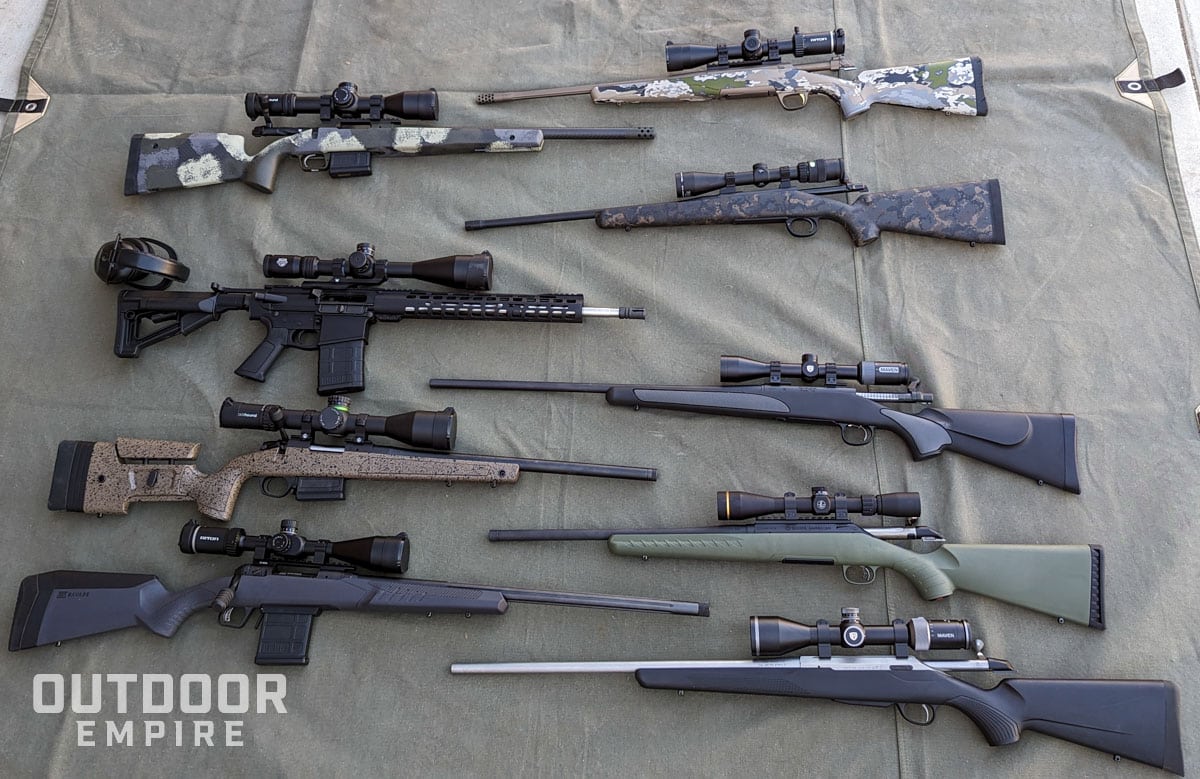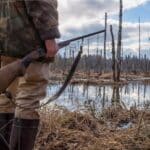The .308 Winchester cartridge is one of the oldest and most prolific chamberings for rifles in the United States. It’s a reliable caliber that can be used to hunt a wide variety of big game and even many competitive shooters prefer it. With so many options, it can be hard to narrow down your options and choose the right .308 rifle for you.
I had the opportunity to test and compare nine different rifles, all chambered in .308 WIN. You can read our best 308 rifles review to learn more and see our recommendations. I was fortunate to partner with Ron Spomer on this project. He published several YouTube videos about it.
I learned a lot from Ron that week and wanted to share what I learned about how to select a good rifle, especially if you want to use it for hunting. Read on for help honing in on what to look for in a .308 rifle.
Why Do You Want a .308 Rifle?
You don’t want to buy an expensive, high-end competition rifle only to dread lugging it through the woods on a hunt. You also don’t want to worry if you can trust it to make the shot you need.
Start by considering what you actually want to do with your rifle, then you’ll know which features and characteristics to focus on.
Recommended: Pros and Cons of .308 Rifles: Great Gun, But Not For Everyone
Hunting
Hunting rifles are designed to be carried for long distances, function reliably, and hold up to use in extreme outdoor environments. They should generally be lighter and easier to handle than target rifles, and you don’t need to fret if that comes at the cost of a little accuracy. The barrels are typically thinner, so they are more susceptible to point of impact shift due to barrel heating if they are fired rapidly.
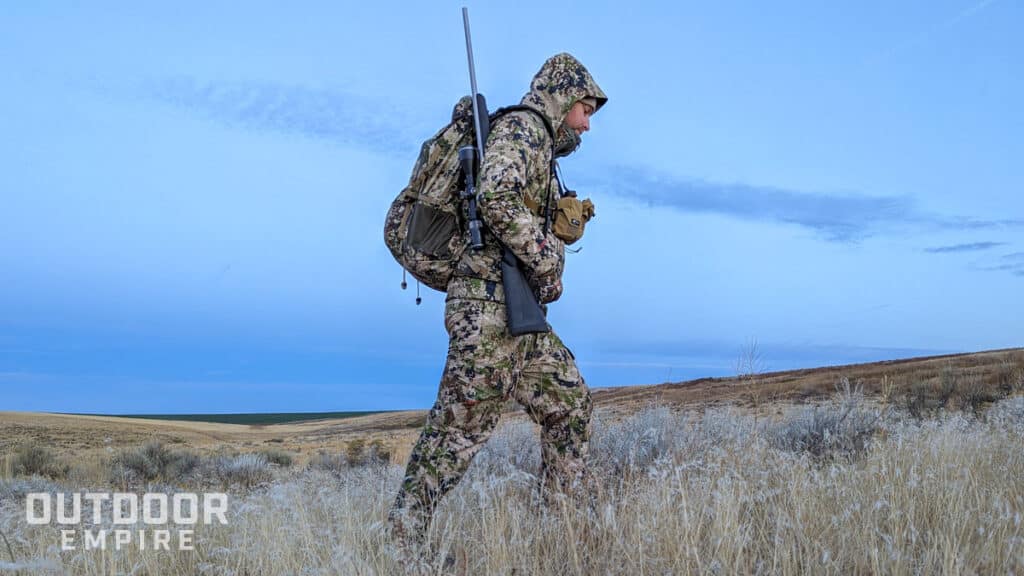
Typically, .308 hunting rifles will accept only a small number of rounds and many states place a limit of 5 rounds on rifles used for hunting. This results in a rifle that is sleeker, easier to handle, and has fewer moving parts.
Target Shooting
Target .308 rifles, typically heavier and larger than hunting rifles, are built for stability and accuracy with thick, long barrels and heavy, adjustable stocks. Customization options like attachment points and rails allow for accessories such as bipods and high-powered scopes. Their weight, beneficial for reducing recoil and stabilizing sight pictures, is less of an issue in non-maneuverable, long-range shooting scenarios.
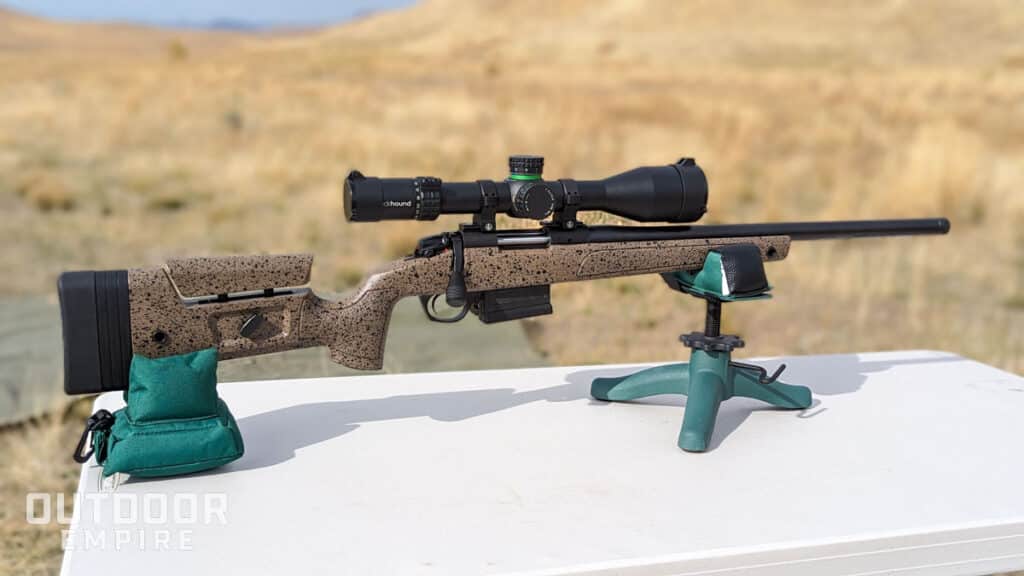
Tactical-style .308 rifles balance the agility of hunting rifles with the precision of target models. Despite their lightweight design, they don’t compromise on accuracy, durability, or adaptability. Suited for a range of applications from professional military use to competition shooting, these rifles maintain effective performance from 30 to over 1,000 yards. Their high cost reflects the advanced technology and top-tier performance demanded by users in challenging, rapid-fire shooting environments.
Main Considerations
It helps me to really dial in on each main part or quality of a gun, then decide which ones are important to me. For example, some things, like the trigger, aren’t particularly critical to me even if they are to someone else. But weight is really important to me because I don’t like to lug around more than what’s absolutely necessary when I’m deer hunting.
Think about and evaluate the following things that will affect your overall satisfaction with whatever gun you ultimately choose.
Action
The most common action for a .308 caliber rifle is a bolt-action. Hunting rifles and many target-oriented .308 precision rifles have a bolt action. Bolt action .308 rifles are simple to operate and have fewer moving parts than a semi-auto or lever action, which makes them less prone to failure. This reliability makes them the most common type of action for a hunting rifle.
When choosing a .308 bolt-action hunting rifle, consider if it has a 2-lug or 3-lug bolt. This choice impacts bolt lift height, affecting cycling speed and scope clearance. For faster action and compatibility with larger scopes, a 3-lug bolt, like those on the Browning X-Bolt Speed SR and Ruger American, usually offers a lower lift.
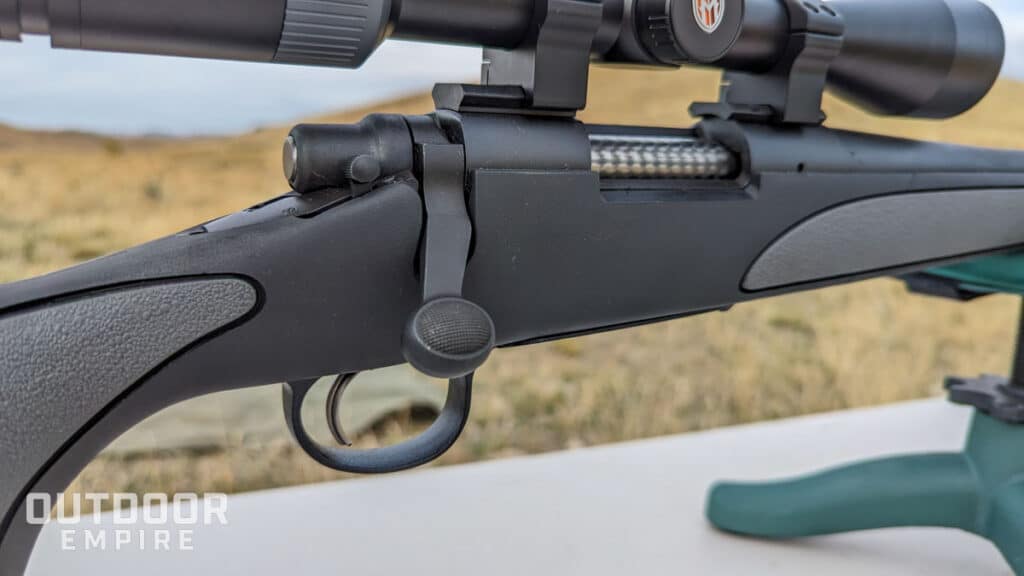
A .308 lever-action rifle like a Browning BLR is quicker to cycle than a bolt-action in experienced hands. This is useful for bear hunting or in thick wooded areas. But there’s a lot more moving parts which makes them harder to clean and maintain. They can also get mucked up more easily in rain or snow.
If you’re into target shooting or hunting coyotes and varmints, the AR-10 platform is a great choice for semi-auto fans, especially since it was designed around the .308 Winchester cartridge. The AR-10 is known for its modularity, ease of use, low recoil, and accuracy. But, remember, laws vary — in some states, the AR-10 can be restricted or even illegal, and it might not be lawful for hunting. Always check local laws before buying.
Barrel
More and more hunters want a threaded barrel these days and I’m one of them. It’s nice to have the option, for now or later, to add a suppressor or a muzzle brake which can help reduce recoil and even improve accuracy. I definitely found that to be true when I added a suppressor to my X-Bolt Speed SR.
Free-floated barrels are generally more desirable for a lightweight hunting rifle with a synthetic stock or for a heavy target rifle like the Bergara B-14 HMR or Savage 110 Tactical. Like we saw on the Remington 700 SPS, flexible plastic stocks with a rifle bedded to them doesn’t do any favors to accuracy. It should either be free-floated, or fully bedded to a stiff stock.
Barrel length might not matter a whole lot for most hunting purposes, and if it has a threaded muzzle a suppressor can give you some added length if you want it. Long barrels can be great for target shooting, but a nuisance when you’re brush busting through the deer woods.
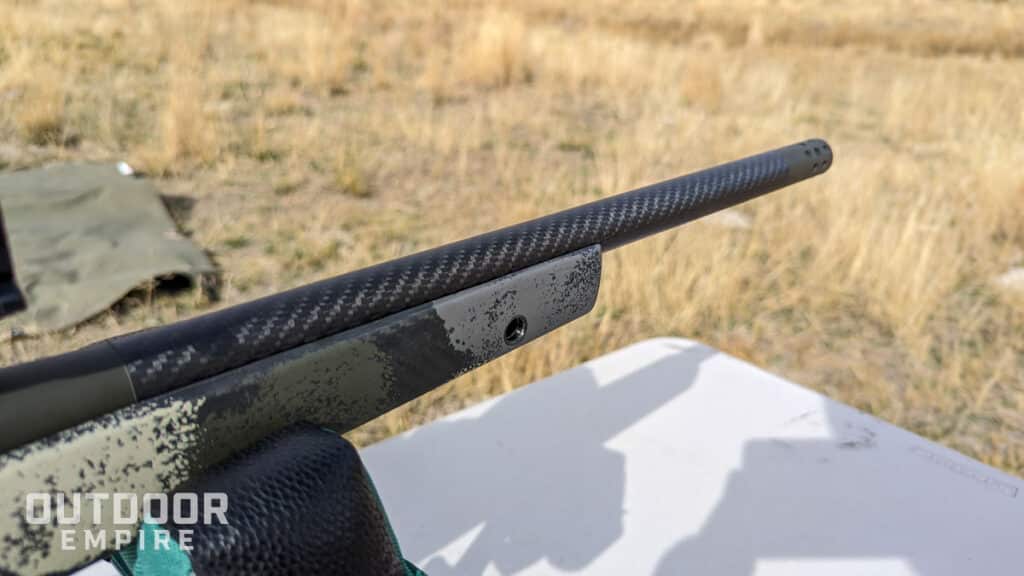
Sporter weight barrels are typically fine for hunting rifles whereas thicker heavier barrels ore often desirable for target guns. Gun makers often try to shed some weight by fluting a barrel, which is great. Carbon fiber-wrapped barrels are another attempt to shed weight and maintain stiffness, but they drive the price up quite a bit.
For hunting you also want a corrosion-resistant barrel. Some older blued barrels can rust through the finish whereas newer guns with cerakote or other fancy finishes like the ArmorTough used on the NULA Model 20. A stainless steel or carbon fiber barrel will do the trick too.
Stock
A flat-bottomed forestock, found on rifles like the Savage AccuStock and Bergara B-14 HMR, is great for stable bench shooting. It’s also favored by some long-range hunters. However, traditional hunting stocks, with their curved forends, are easier to carry and use in various field shooting positions. Rifles like the Tikka T3x aim for a balance between these styles. Your preference might depend on how you plan to use your .308.
Hunting rifle butt stocks are usually straight and slender, but adjustable stocks are gaining popularity for their customizability in length of pull and comb height. This is particularly useful for different sized shooters or when using high-mounted target scopes.
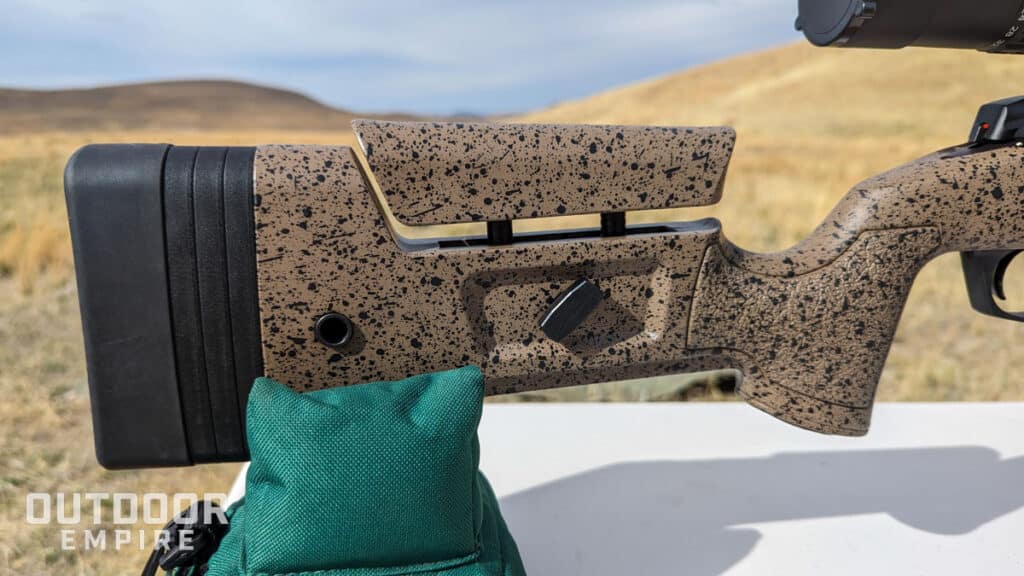
Materials also matter. Synthetic stocks are light and weather-resistant, while wood stocks require more care. Stiff molded polymer stocks like on the Bergara B-14 HMR can add significant weight compared to an ultralight carbon fiber stock like on the NULA.
When choosing, consider how the rifle feels when shouldered. Try it out in a gun store before purchasing if you can. And check for a good recoil pad to ease the kick.
Trigger
Those who enjoy customizing their setup may appreciate an adjustable trigger. Most hunters tend to stick with the factory-set trigger pull weight (usually about 3 pounds) and don’t necessarily need to scrutinize that feature too much when making their purchasing decision.
Safety
A lot of hunters, including Ron Spomer and I, like a bolt that locks with the safety on. It prevents accidentally lifting or pulling back the bolt while moving through thick brush, which can be a safety issue or cause unintentional ejection of your round. So, if you like the sound of that, look for a rifle with either a 3-position safety or a 2-position safety that locks the bolt.
The downside of a locked bolt is that you must take the gun off safe to remove a round from the chamber – something you do often when moving or before getting back into a truck. I really like the Browning X-Bolt because even though it has a bolt-locking 2-position safety, it also has that bolt release button that lets you eject a round without taking the gun off safe.
Target shooters may not get too picky about a bolt-locking safety.
Weight
If you’re often hiking or navigating rough terrain when you hunt, you’ll likely appreciate less weight, especially if backpacking. Spending more money on a rifle with a lightweight carbon fiber stock and carbon fiber-wrapped barrel might be worth it to you in these instances. For stand hunting, spending extra for a lighter rifle isn’t really necessary.
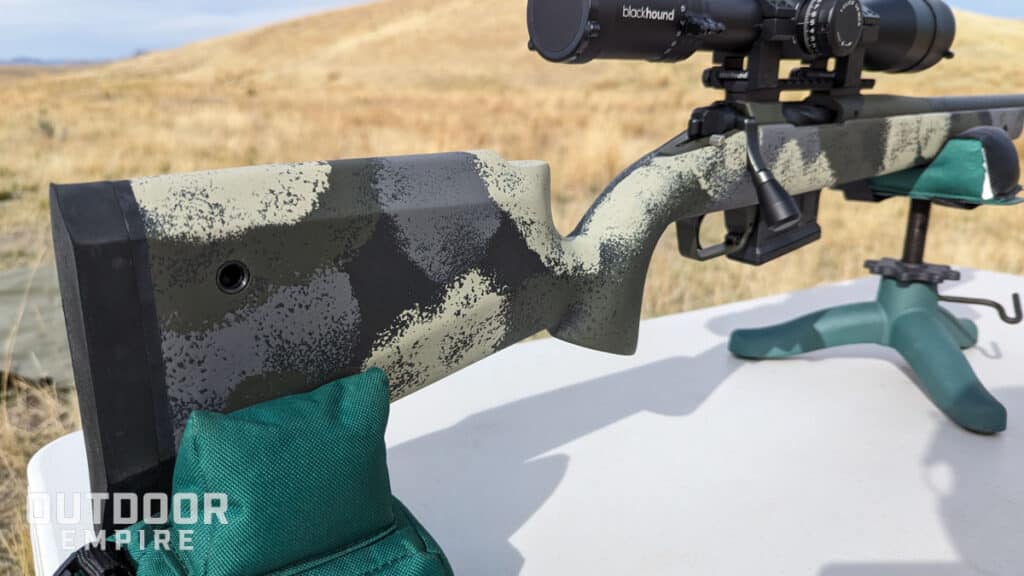
A traditional .308 bolt-action hunting rifle weighs 7-8 pounds without an optic. A lightweight rifle weighs around 6 pounds. That NULA Model 20 may just be the lightest .308 rifle you’ll find at a hair over 5 pounds. The Tikka, Ruger, and Browning from this review are also very lightweight, which was a main reason we selected them as some of the best .308 hunting rifles.
Target and long-range shooters, whose primary objective is precision, probably don’t need to worry about weight and may even prefer a heavy rifle that won’t move as much when dialed in on a target from a bench rest. Though, something like that Springfield Waypoint rather attractive to long-range mountain hunters because it’s a precision .308 rifle that weighs relatively little.
Also keep in mind that any optic or scope you put on your rifle can add considerable weight. It doesn’t make a lot of sense to pay for a super light hunting rifle only to slap a behemoth target scope with a 34mm tube and a 54mm objective lens on top.
Accuracy
Accuracy matters for any .308 rifle, but it ought to matter more to a target shooter than a hunter. When hunting, your objective is to hit the vital organ zone of a big game animal which can be the size of a dinner plate or larger. That gives you some leeway and allows you to favor things like weight and reliability more than a precision target shooter might.
Lucky for us, almost all modern .308 rifles are plenty accurate for hunting, even for around $500 like that Ruger American Predator. There are many highly accurate .308 rifles to please the target shooters too.
Price
Most rifles are sold at prices below the Manufacturer Suggested Retail Price (MSRP) by retailers such as sporting goods stores and gun shops. I recall paying the listed MSRP for only two of the eight rifles I acquired for our best 308 rifles review. I bought the others at lower prices. So shop around if possible.
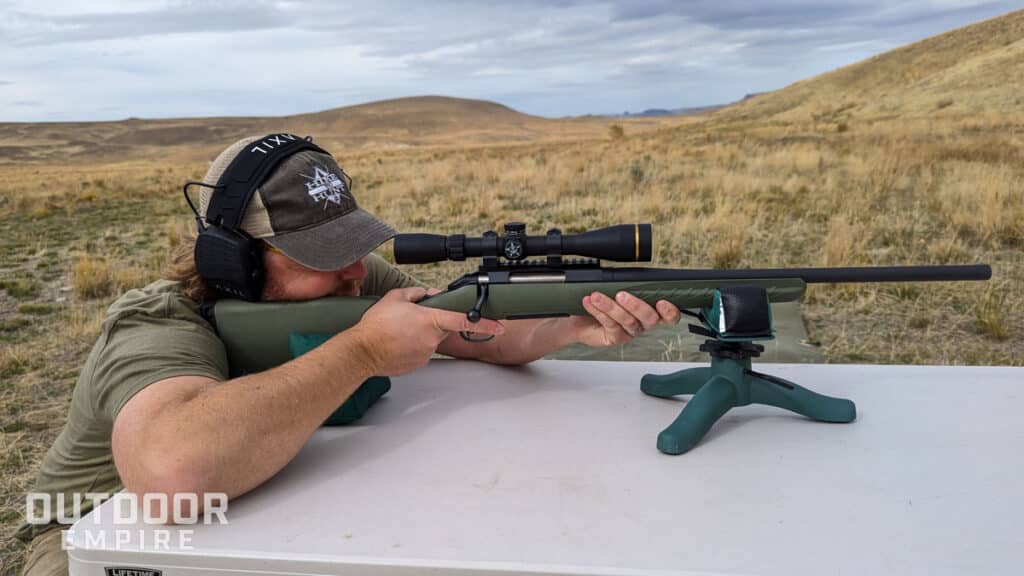
Any .308 rifle under $1,000 is a very reasonable, if not budget-friendly, price. The least expensive .308 rifles start around $400, but I paid $530 for my Ruger American Predator and it offers a ton of value for that amount. Mid-range .308 rifles will cost roughly $1,000-$2,000 and anything over that I would consider high-end. But don’t get me wrong, you could spend several thousand dollars on a tricked out competition, custom, or precision rifle.
Ammunition
When choosing a .308 rifle, it’s better to consider ammo types after selecting your gun. Think about your intended use and the bullet weights that suit your purpose. This will help you find a gun that pairs well with what you expect to shoot.
In our experience shooting 3 different types of ammo through 9 different .308 rifles for our best 308 rifles review, the 150 grain bullets seemed to produce the best accuracy overall. So that’s where I’d start experimenting with a new .308 rifle. If you think 180 grain bullets are too light for what you want to hunt, you might need to explore other calibers because that’s about where .308 Winchester ammo tops out.
Popular .308 Brands
If you’re looking to buy a .308 rifle, the brand probably isn’t the most important thing to look for, but you do want a dependable brand with a good reputation. Here are a few manufacturers that have been making quality .308 rifles for a long time. This is far from a comprehensive list, so don’t limit yourself just to these.
Winchester
The Winchester Arms Company has been active in America since 1866. Winchester introduced the .308 Winchester caliber cartridge with the bolt action Model 70 rifle and the semi-automatic Model 100 rifle. The Model 70 is still one of the best .308 hunting rifles today. Winchester rifles retain their reputation for quality and craftsmanship.
Ruger
Ruger offers a number of .308 rifle models, from budget hunting combos to fine hunting rifles to tactical rifle setups. Recently, they have been a fierce competitor in the budget rifle field with the introduction of their Ruger American series. These rifles produce accuracy that is difficult to beat in the budget firearms game.
Remington
As mentioned earlier, the Remington 700 is one of the most widely sold .308 bolt-action rifles in American history. Remington actions are commonly used for custom rifle builds. The company has faced criticism in the past due to their handling of potentially dangerous issues with their trigger system. Regardless, Remington still has many fans in the rifle world.
History of the .308 Winchester Cartridge
Introduced in 1952, the .308 Winchester is one of the most popular rifle cartridges not only in America, but worldwide. At the time of its introduction, developments in powder technology allowed it very similar power and ballistics to the .30-06 Remington. All in a short action package!
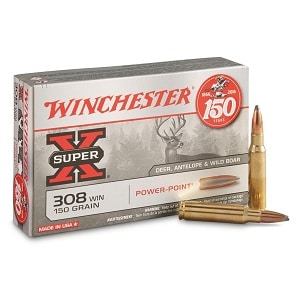
Two years later, the .308 WIN was adopted by NATO as the 7.62X51mm NATO. The difference between these cartridges and their interchangeability has been a subject of much debate in the gun community.
In truth, there are only very minor differences between the two cartridges. They are just exacerbated by differences in testing methods between civilian and military standards. Overall, the .308 Winchester has a slightly shorter chamber specification as well as thinner case walls. SAAMI (Sporting Arms and Ammunition Manufacturers’ Institute) considers the two cartridges safe to interchange. Just be aware it can lead to issues.
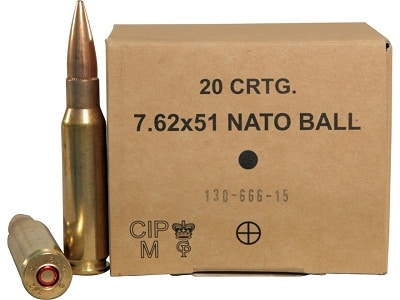
The .308 Winchester is considered a highly versatile and capable cartridge. Its intermediate length enabled it to be adapted to bolt-action, semi-automatic, lever action, and other types of firearms easily.
The cartridge is considered powerful enough to humanely kill almost any large game in North America. It even has competent ballistics for shooting out to 1,000 yards and potentially beyond. These characteristics have made the .308 highly popular for sporting, hunting, and tactical purposes.
Read this next: Best .308 Hunting Rifles Tested and Reviewed

